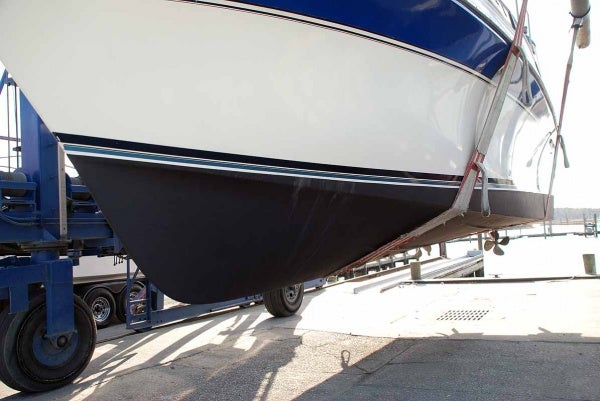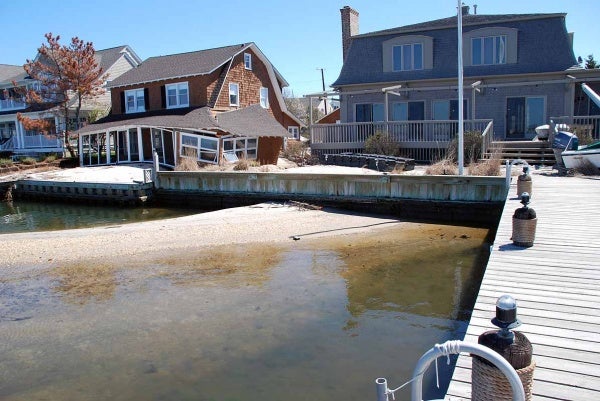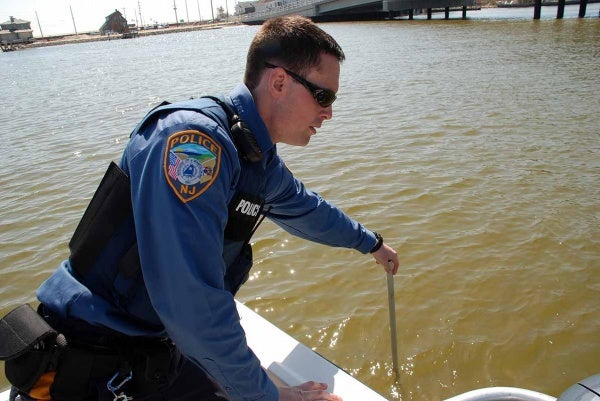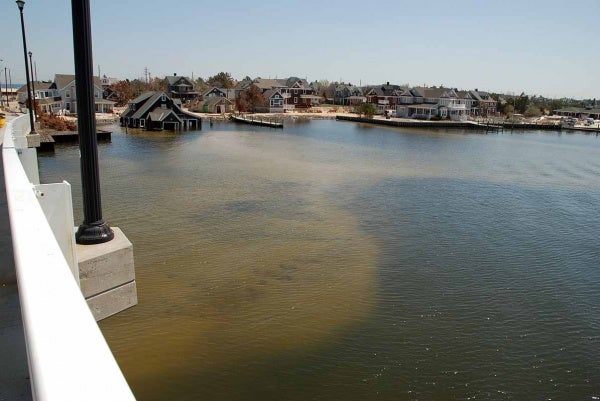Barnegat Bay boaters urged to use extra caution this season
Recreational boaters on Barnegat Bay—a popular waterway long known for its shallow depths—are being urged to be extra vigilant this season to avoid damaging their vessels. Cleanup following Superstorm Sandy is expected to extend through the summer, and debris and sand that washed into the bay may make navigation trickier this year.
“Our goal is to have 75 percent of the waterway debris removed by June 1, so it is a massive effort,” said state Department of Environmental Protection Commissioner Bob Martin. “I expect the vast majority of the waterways will be open for boating, fishing and recreation this summer. We ask boaters to use extra caution and common sense.”
In addition to debris, the Federal Emergency Management Agency has estimated nearly one million cubic yards of sand washed into Barnegat Bay when the ocean breached the barrier island in several places during the storm. The largest and most devastating breach occurred in Mantoloking, where today shoaling clearly may be seen along bay-side bulkheads and docks and under the Mantoloking Bridge.
On a recent outing near the bridge, the boat’s depth gauge measured only two feet in waters local mariners say were four to six feet deep pre-Sandy. “You can still have fun on the bay this summer, just stay in the channels,” said Robert Sherman, special officer with the Mantoloking Police Department. “A lot of people like to stray away from the channels, cruise along the bulkheads looking at the nice houses. They just have to be aware that (the bottom contour) is changed from past years.”
To avoid running aground, or hitting bottom, a boater must know his vessel’s draft — how deep the water must be to accommodate the underside of the boat. A typical, recreational motorboat may draw only two or three feet of water, while a 40-foot sailboat may require six or more feet Experienced skippers plot their course using tide and navigational charts, GPS and depth finders, and in areas known to be shallow, stick to marked channels that are dredged to maintain adequate depths.
“The Army Corps of Engineers has already started cleaning out the Intracoastal (Waterway) channels,” said Martin. “We’re working with the state Department of Transportation to clear out the state channels and we’re going through all across the bay and all the other waterways to make sure they’re clear.”
The state has hired three companies to clear New Jersey’s waters of storm debris. In central Jersey, Alabama-based CrowderGulf crews have been working seven days a week; to date they have removed about 20,000 cubic yards of debris, including pieces of homes, cars, boats, docks and trees.
Part of the work—which began last week—includes demolishing and removing several homes that landed more or less in tact in Barnegat Bay. Chris Nelson, who is special counsel to the borough, said after those homes are removed, he expects sand extraction in the waters off Mantoloking to begin.
“They are going to reach into the bay with excavators, pull the sand out, load it on the barge, take the sand off the barge, put it into a sifter, and then sift that sand, put it in an off-road dump truck, and put it back on the beach,” said Nelson, adding that the work is expected to take about a month. “The state’s doing everything exactly how it should be done, in terms of getting reimbursement from FEMA, to make sure that we get all the debris removed and paid for.”
Just south of the bridge at the Mantoloking Yacht Club, repairs to the storm-damaged buildings and bulkhead are nearly complete. Vice Commodore Michael Spark said while the cleanup in the area has been remarkable, he hopes state-contracted crews will come soon to clear unwanted sand clogging some of his slips.
“I think there’s still some (sand) that needs to be removed and there’s talk that maybe they will be helping us with that. But come Memorial Day we’re going to be fully up and running,” said Spark. “Everybody’s question is, ‘Is it going to be safe for my kids?’ I think it’s perfectly safe.”
In promoting a safe season, state officials recommend boaters:Stay in navigation channels or deeper waterProceed at lower speeds and use a lookoutStay out of closed-off areasStay away from debris removal and dredging operations, andWear a life jacket
Boaters who spot debris in the water are asked to call the state’s hotline: 1-877-WARN DEP.
___________________________________________________
Sandy Levine is a freelance writer and television producer who was born and raised at the Jersey Shore.
WHYY is your source for fact-based, in-depth journalism and information. As a nonprofit organization, we rely on financial support from readers like you. Please give today.










